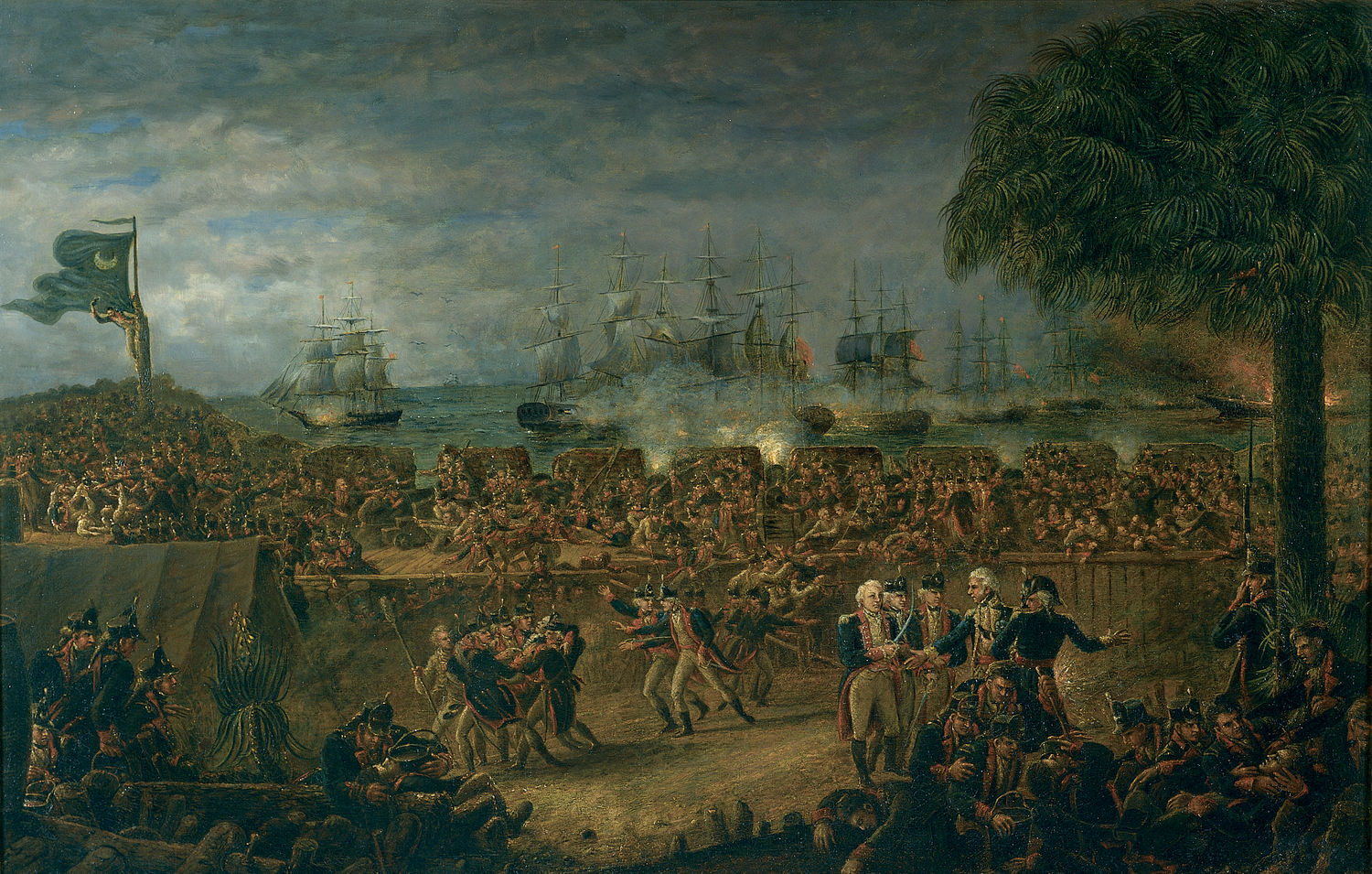
| Title | The Battle of Fort Moultrie |
| Artist/Maker | John Blake White ( 1781 - 1859 ) |
| Date | 1826 |
| Medium | Oil on canvas |
| Dimensions | h. 31.5 x w. 49.5 in. (h. 80 x w. 125.7 cm) |
| Credit Line | U.S. Senate Collection |
| Accession Number | 33.00004.000 |
John Blake White’s The Battle of Fort Moultrie “portrays in a spirited manner the famous battle . . . fought and won against a formidable British fleet . . . just six days prior to the Declaration of Independence,” wrote Octavius White, the artist’s son. Octavius White donated this work to the U.S. Senate in 1901. He gave it to the nation, he said, “that the sons may know how their fathers fought to secure the precious boon of liberty.”[1]
The painting presents a view of the battle from inside the American fort, with the British fleet firing at full force in the background. The artist inserted portraits of William Moultrie and Francis Marion in the right center foreground. William Jasper is seen defending the fort’s flag. At the center background, along the perimeter wall of the fort, is the artist’s own father, Blake Leay White, who is thought to have participated in the battle. White based his portraits on existing likenesses in South Carolina family collections and on his memory. According to White family tradition, the artist’s father and General Marion, known as the “Swamp Fox,” owned adjoining plantations. The young artist, it was said, would sit on Marion’s knee during visits.
In 1899 Octavius White had presented three other Revolutionary War paintings by his father to the Senate: Sergeants Jasper and Newton Rescuing American Prisoners from the British, General Marion Inviting a British Officer to Share His Meal, and Mrs. Motte Directing Generals Marion and Lee to Burn Her Mansion to Dislodge the British. Although White drew inspiration for these works from a biography of Francis Marion as recounted by Parson Mason Locke Weems, the artist’s source for the Fort Moultrie painting is less clear.
John Blake White was born in Eutaw Springs, South Carolina. He studied law in Charleston and in 1800 traveled to England to pursue an art career under the guidance of American artist Benjamin West. White returned to the United States three years later and continued to paint historical subjects, portraits, and miniatures. His work was exhibited at the Boston Athenaeum, New York’s National Academy of Design, the Apollo Association for the Promotion of the Fine Arts, and the South Carolina Institute, where he received a medal for best historical painting. He was a founder of the South Carolina Academy of Fine Arts. Although White never gained the artistic recognition he desired, he painted in his leisure time until about 1840, while practicing law in Charleston. He also served in the South Carolina state legislature and wrote several plays.
1. Congressional Record (22 January 1901) vol. 34, pt. 2: 1287.